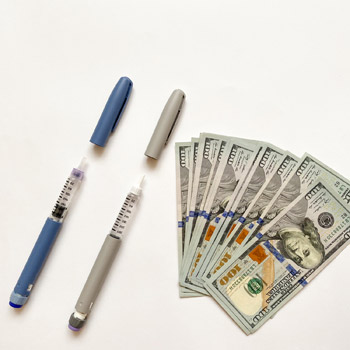Staying connected: Touch over tech
ACP's new President addressed the physician-patient connection in his first column.
I am excited to have the opportunity to serve as President of ACP. Similar to many of my predecessors, I have developed a core theme that will be reiterated throughout my term. I would like my first column to address my theme for this Presidential year: rededicating ourselves to humanity.
One manifestation of the humanity of providing medical care is through the professional manner of touch, which provides a connection that no form of technology can offer for our patients. A quote by Francis W. Peabody, MD, has always resonated with me: “One of the essential qualities of the clinician is interest in humanity, for the secret of the care of the patient is in caring for the patient.”
We commonly refer to “staying connected” as it relates to our electronic devices. However, I would like to challenge us to stay connected with our patients through the power of touch that can transmit empathy, compassion, comfort, and healing. The ability to connect ourselves to our patients through touch separates us as physicians from the algorithms, biographical data, and technological advances in medicine. Computers, apps, wearables, and artificial intelligence are powerful tools, but none more powerful than that of human touch to make a genuine connection with our patients.
Technology can assist us with decision making in managing a medical condition, but it can't form a bond with the patient or provide the human emotion that patients need when ill or concerned. The physical act of touch has been proven to have physiological effects on humans by decreasing cortisol, increasing oxytocin, and even enhancing immune response. I certainly appreciate technology and its advances, but my intent is to not forget our commitment to connect with patients as a core fundamental principle of humanity.
In our personal lives, we have formed our most significant connections through touch in our infancy, childhood, parenting/guardianship, and in our personal relationships. When an infant cries, the natural instinct is to hold that infant for comfort. As a child develops, the connection with a parent (or guardian) continues to be fostered through touch. In our own loving relationships, we form a connection with our partners through hand-holding, hugs, and kisses to bring us intimately closer. What would happen if our personal relationships took place solely over audio-visual apps? We would be missing an essential ingredient to manifest our love and affection through the power of touch.
Well, in our medical profession, the connection with our patients requires the same level of focus and bond that technology can't provide. We cannot mistake the exchange of keystrokes on a laptop or the partition of the EMR computer screen as a proxy for caring for the patient. We have to remember to get back to the fundamental basis of forming a bond.
As I reflected on my medical education and experiences, there are reasons why I feel this concept of touch is an essential component of humanity. As a medical student, my early experiences of medical education were didactic focused. However, I was intrigued and eager to connect with the human body first through gross anatomy, then by working with standardized patients in acquiring physical diagnosis skills, and finally through exposure to actual patients in my clinical clerkship years, all of which involved the physical requirement of touch for examination. Neither a textbook nor a simulated mannequin can replace the experience of dealing with the human body in such an integral fashion.
During the early phase of the COVID-19 pandemic, as practices pivoted to transition to telehealth, a repeated question from my patients was, “I am glad I get to interact with you virtually, but how will you examine me?” What was missing was the expectation and ritual of touching the patient. COVID-19 has exacerbated emotional isolation through illness and suffering, but the most heartbreaking aspect was patients dying alone, with no family, clergy, or visitors at the bedside holding their hands. We attempted to bridge the dying experience with telehealth connections, but even the best of virtual technology was inadequate in replacing such a simple connection of touch through one's illness or final hours of life.
Throughout my career, I have been inspired by Abraham Verghese, MD, MACP, who has spoken on the topic of humanity and all that the power of touch brings to the patient experience. Dr. Verghese has reminded us that technology is great, but the physical examination is a “sacred ritual” of our profession and the washing of the hands prior to the examination “cleanses us as we form a bond of connection.” He has spoken on the power of touch in a TED talk that explains how after a physician has examined the patient, the physician has “earned the right” to share the assessment and plan of care, because the physician has used this power of human connection during the physical exam. This connection helps us earn the patient's trust and confidence through such a transformational bond.
Whether it's a handshake (or a fist bump or elbow bump in this COVID-19 era) when we enter the exam room, the actual ritual of the physical examination, a professional hug in order to share in a patient's medical outcome, a sentimental hand on the knee or shoulder, or hand-holding during a time of grief, distress, or sorrow, these manifestations of touch provide a bond and human connection with the patient that cannot be duplicated or replaced, despite the myriad technological advances in medicine. It is this human connection that our patients depend on and what they expect of us as they commit to the physician-patient relationship. Let us remember to exude one aspect of our humanity through this simple but powerful action of touch, which represents a human connection that is sacred and improves the patient's comfort, healing, and trust in us as physicians.




